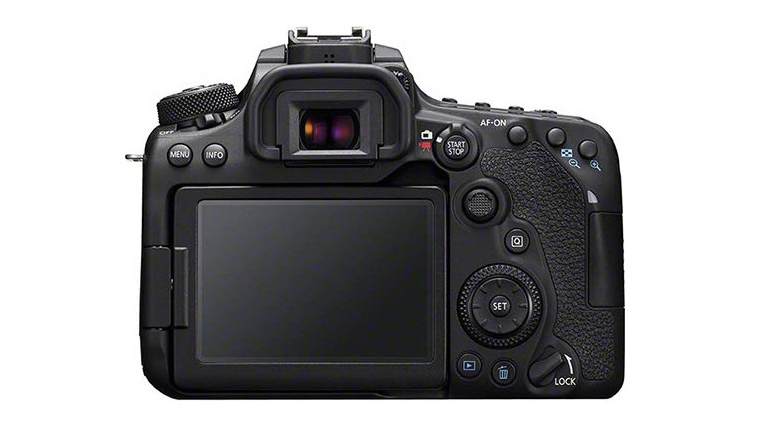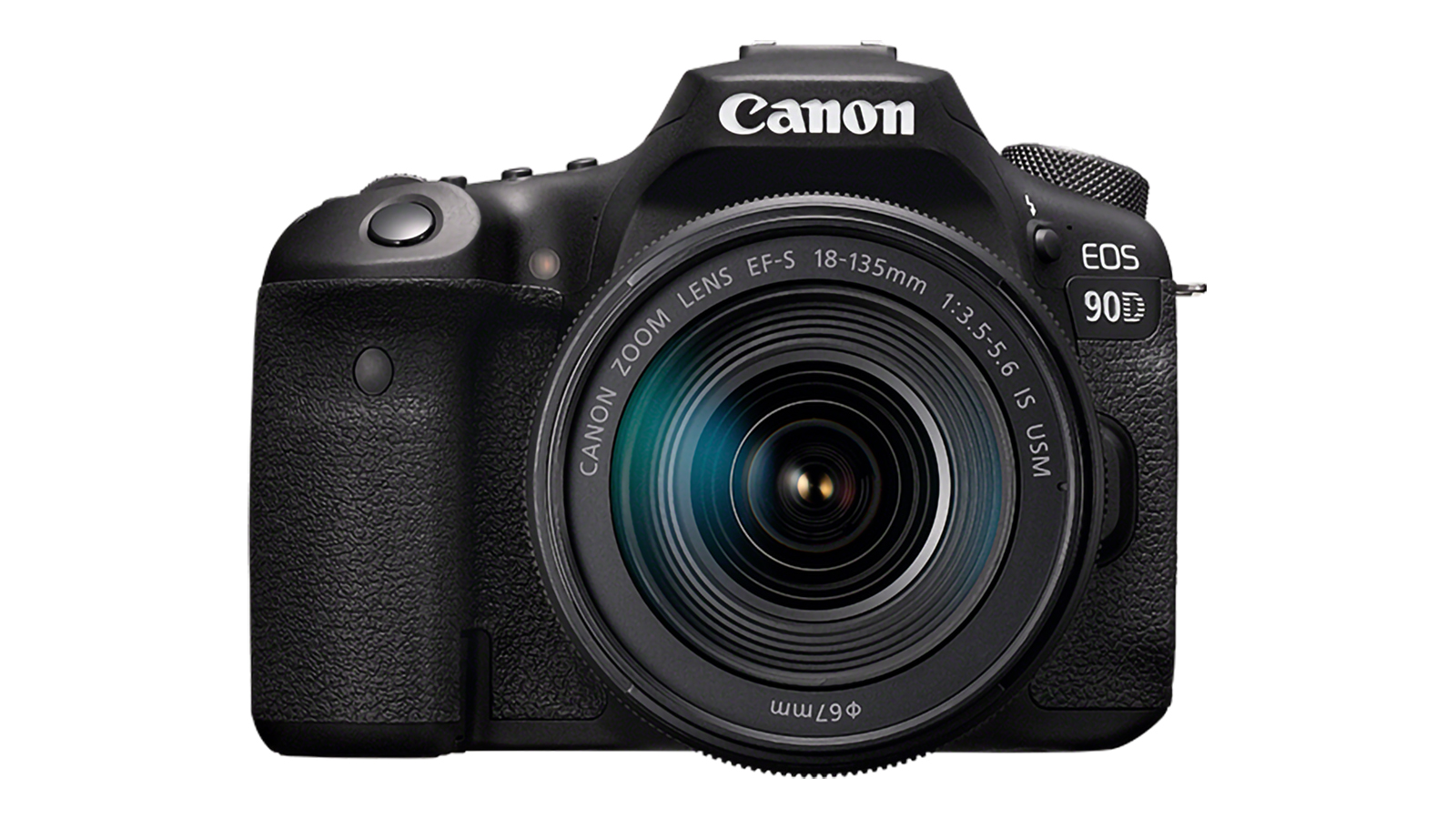Canon EOS 90D review
Can this advanced DSLR justify your investment? Find out in T3's Canon EOS 90D review


Well built, reasonably fluid in use and festooned with plentiful control options, both in terms of physical buttons and its touch screen menus, the Canon EOS 90D is the very definition of a ‘comprehensive’ camera.
-
+
Advanced set of features
-
+
Relatively lightweight build
-
+
High-resolution imagery
-
+
High-ish capture speeds
-
+
Vari-angle touchscreen LCD
-
-
Pricey
-
-
Single SD card slot
-
-
Not much noticeable gain from 32MP resolution
Why you can trust T3

While compact mirrorless interchangeable lens cameras may be what all manufacturers are focusing on these days, the traditional digital SLR hasn’t been entirely forgotten.
Styled very traditionally, the 32.5-megapixel resolution Canon EOS 90D is aimed at the same type of user as the previous Canon EOS 80D it replaces – namely someone into sports and wildlife photography, disciplines where both high resolution and high speed are key.
In fact, at the time of writing the EOS 90D is the highest resolution APS-C sensor incorporating DSLR you can buy, while still being able to deliver continuous 10 frames per second shooting bursts.
Potentially then, this is the ideal jack-of-all-trades DSLR for photographers who don’t require the extra degree of detail that an even higher resolution and bigger sensor ‘full-frame’ (as opposed to APS-C) model would alternatively offer.

Canon EOS 90D review: Design & Handling
The Canon EOS 90D may all about resolution, speed and handling, but being a DSLR means this one is still relatively chunky, with plenty of equally rotund controls at our fingertips.
That said, when held in the palm the camera feels robust without being prohibitively heavy, even with lens attached – in our case an image stabilised 18-55mm standard zoom, offered as a bundle deal with the camera body – plus battery inserted. Its manufacturer states that the weight of the 90D has actually fallen when compared to its predecessor and it now weighs a very manageable 701g without a lens.
As well as the eye-level optical viewfinder anyone who has used a DSLR before will be familiar with, the EOS 90D additionally features an LCD screen that can be flipped outwards from the body and tilted and swivelled in a camcorder-like fashion so it is facing the subject in front of the lens, if desired.
Get all the latest news, reviews, deals and buying guides on gorgeous tech, home and active products from the T3 experts
There’s also a very handy top plate LCD window that lets us view and alter key shooting settings with a press of a button and the rotation of a control wheel, without having to drill down into backplate menu screens.
This is a camera that feels semi-professional in some ways but amateur level in others – namely the single SD card slot provided, when the resolution on offer here suggests that twin SD slots and therefore double the amount of cards might be preferable to deal with all the data this one is capable of delivering.
We also get a pop-up flash – a feature most commonly found on consumer DSLRs, and omitted entirely by professional models – as well as a vacant hotshoe that will allow an accessory flashgun to be attached if desired, for even better results.

Canon EOS 90D review: Features
The Canon EOS 90D’s APS-C sensor is combined with a Digic 8 processor, Dual Pixel CMOS AF like the rest of Canon’s current DSLR range, the ability to shoot 4K ‘movies’ with no crop this time around at 30fps or 25fps, plus the option to shoot up to 120fps in Full HD mode. The latter will deliver slow-motion results when replayed.
The 90D also delivers ‘clean’ HDMI output, and is capable of shooting stills up to 10fps, or boosting this to 11fps if Auto Focus is fixed.
We also get 45 cross-type AF points, focus bracketing, electronic shutter mode, an ISO100-25600 light sensitivity core range expandable to ISO51200, Wi-Fi and Bluetooth connectivity, the aforementioned vari-angle touch screen control, two multi-controller joysticks on the rear of the camera, plus much improved 1300 shot battery life.
The compatible battery grip for the EOS 90D, which is an optional additional purchase should we want even more power, is the same as that for the 80D.

Canon EOS 90D review: Performance
If you’ve handled a digital SLR before it’s fairly quick and easy to get up and running with the Canon EOS 90D.
The chunky on/off switch encircles the ten pence piece sized shooting mode dial at the left-hand side of the top plate, where it falls under the thumb of the left hand when gripping the camera.
We prefer a physical mode wheel for quick access rather than having to select such options on screen, even if there is a touch screen LCD supplied.
It makes for a ‘best of both worlds’ approach that makes for more intuitive – and thus speedier – use. As it is, when you see a possible shot there’s the ability to be squeezing the shutter release and capturing it in the blink of an eye.
Canon EOS 90D review: Image samples










The standard 18-55mm kit zoom we were provided with alongside our Canon EOS 90D is adequate for beginners getting started out of the box, but more demanding users will undoubtedly want to upgrade it to a prime lens or two pretty soon after buying.
While images contain a lot of information, even when downloaded and viewed on a desktop computer we struggled to see much improvement over the kind of crispness a 20-megapixel APS-C sensor model would usually deliver in this sort of set up, and we felt shots still benefitted from adjustment of contrast and further sharpening straight out of the camera.
We have to wonder therefore whether its manufacturer is playing the numbers game to justify an upgrade here. While extra pixels are nice to have on paper, it’s not always a necessity in practice.

Canon EOS 90D review: Verdict
Well built, reasonably fluid in use and festooned with plentiful control options, both in terms of physical buttons and its touch screen menus, the Canon EOS 90D is the very definition of a ‘comprehensive’ camera.
Whether that high pixel count crammed onto its sensor actually serves a practical purpose beyond making its spec look more attractive is up for debate, but if you’re looking for one camera that does it all and doesn’t need to reach a bit further to grab hold of a full-frame sensor model for just that extra degree of detail, then the 90D fits the proverbial bill.
Liked this?
- Best instant camera
- Best travel camera
- Best camera for kids
- Best entry-level camera
- Best cheap full-frame camera

Gavin Stoker has been writing about photography and technology for the past 20 years. He currently edits the trade magazine British Photographic Industry News - BPI News for short - which is a member of TIPA, the international Technical Imaging Press Association.